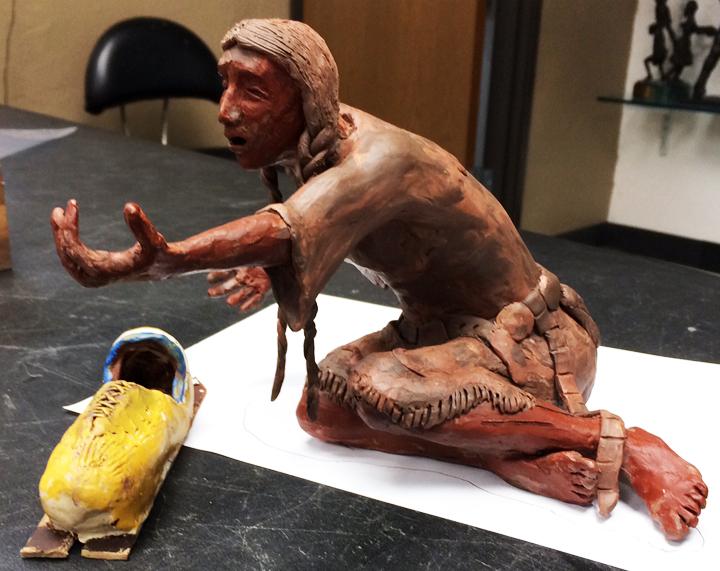
A massacre in a remote part of southeastern Colorado could become a major focal point of the state Capitol grounds.
Descendants of the victims of the Sand Creek Massacre are raising funds and pushing forward with plans for an elaborate monument. The design would include a memorial path replicating the river bend where more than 600 U.S. volunteer soldiers attacked an encampment of Cheyenne and Arapahoe as they slept in present-day Kiowa County. About 200 of them, mostly women and children, were brutally slaughtered.
The path would lead to a set of bronze teepee poles, a statue of a woman collapsed in grief, and a large horizontal medicine wheel.
- 150 Years After Sand Creek Massacre, Effects Still Resonate
- Hickenlooper Offers Apology For Massacre on 150th Anniversary
Gov. John Hickenlooper has thrown his support behind the project and will host a fundraiser at the governor’s mansion Tuesday night. The monument is expected to cost $194,000 to design and construct, with more than half that money pledged by the Arsenault Family Foundation.
But raising money is only one of the obstacles the proposal faces. So far, the committee tasked with approving new monuments for the grounds is giving the idea a cool reception.
When the proposal was presented at a Nov. 20 hearing of the Capitol Building Advisory Committee, the list of concerns was long: the size, the placement, the impact on the overall design of the capitol grounds, and the potential for people to misuse offerings left by tribal members, especially ceremonial tobacco.
Committee member Frank McNulty laid out a number of elements he’d like to see revised.
“A smaller footprint, a display that lends itself to easier maintenance. Something that doesn't by its very nature and construction lend itself to vandalism and mischief,” said McNulty. “And one that doesn't present safety hazards for people who are using the Capitol grounds.”
Righting Historic Wrong
For descendants of the Cheyenne and Arapahoe tribes brutalized at Sand Creek, though, a large, public memorial would be an act of healing.
“The results of it are being felt even today,” said David Halaas, a former state historian who has written about Sand Creek and is a consultant for the tribes. “It's an open wound, it's a very living thing... This horrific event has to be talked about, has to be known.”

Sand Creek is already remembered on one Capitol monument. The large Civil War memorial on the western plaza lists the Battle of Sand Creek, perpetuating a historical whitewashing of the event that persisted for more than a century. In 1999 the state Legislature added a bronze plaque to the monument to correct the record.
Supporters of a separate monument, though, feel more acknowledgement is needed, especially since Colorado’s territorial government was deeply complicit in the massacre.
Halaas is both part of the memorial organizing effort and a member of the Capitol Building Advisory Committee and says he was taken aback by the panel’s opposition.
“We may have to scale back a bit,” said Halaas, “but there are some elements that have to be in there. We’ll just have to see. I think some of the committee has to be educated about Sand Creek.”
This is likely to be the start of a long process. The Advisory Committee only votes on proposed monuments once a year, at its summer meeting, and isn’t known for approving new ones.








